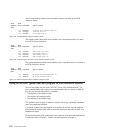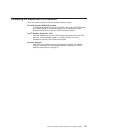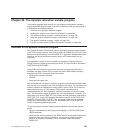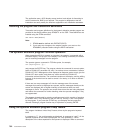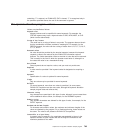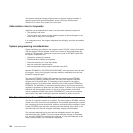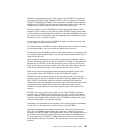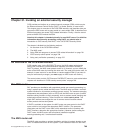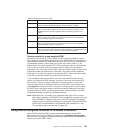
The dynamic allocation sample program does not support negative numbers. It
does not cross-check operand keywords; errors of this type usually cause
DYNALLOC to return error codes of the form 03xx.
Abbreviation rules for keywords
Keywords can be abbreviated. A word in the command matches a keyword if:
v The spelling is the same.
v The first letter is the same, and the remaining letters in the word appear in the
same order as they do in the keyword.
If an ambiguity occurs, the program diagnoses the ambiguity, and lists the possible
keywords.
System programming considerations
Keyword spellings are defined in the program’s table, DFH99T, which is link-edited
with the program. Where possible, these are the same as the corresponding job
control or TSO keywords. Comments in the source code for DFH99T explain how
the system programmer can:
v Change the spelling of keywords
v Define alternative spelling for keywords
v Divide the functions of a verb into subsets
v Add new verbs with subset function
v Add new operands as they become available in the SVC.
Member DFH99BLD in CICSTS32.CICS.SDFHINST is the job stream used to build
the program. If part of the program has been modified, reassemble that part and
link-edit the program again.
The macros IEFZB4D0 (DYNALLOC parameter list structure) and IEFZB4D2
(symbolic key equates), provided by MVS, are used in the dynamic allocation
program and its keyword table. The meaning of each keyword in the table is
defined in terms of a symbolic name, defined by one of the macros IEFZB4D0 or
IEFZB4D2. The definitions of command keywords given in that manual should be
regarded in preference to those from any other source. To obtain a list of command
keywords and their symbolic values, for use as a cross-reference to the MVS
manual, assemble DFH99T with option SYSPARM(LIST), and print the resulting
object code. If the table is changed, repeat the assembly to obtain a new list.
The flow of control when a DYNALLOC request is issued
The flow in a normal invocation is as follows. The main program, DFH99M, receives
control from CICS and carries out initialization. This includes determining the screen
size, allocating input and output buffer sections, and issuing initial messages. It then
invokes DFH99GI to get the input command from the terminal. Upon return, if the
command was null, the main program terminates, issuing a final message.
The command obtained has its start and end addresses stored in the global
communication area, COMM. The main program allocates storage for tokenized
text, and calls DFH99TK to tokenize the command. If errors were detected at this
stage, further analysis of the command is bypassed.
784 Customization Guide



